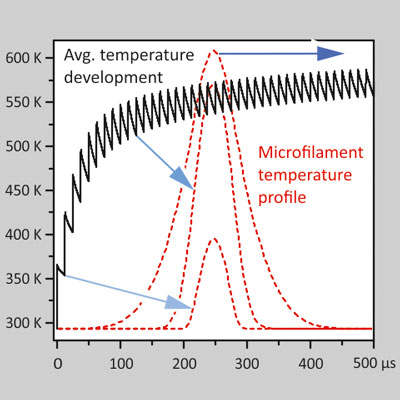| Posted: May 18, 2016 |
How repeated spot microdischarges damage microdevices
(Nanowerk News) In microelectronics, devices made up of two electrodes separated by an insulating barrier are subject to multiple of microdischarges - referred to as microfilaments - at the same spot. These stem from residual excited atoms and ions from within the material, the surface charge deposited on the insulating part of the device, and local temperature build-up. These reoccurences can lead to the creation of pin-holes in the material of the microelectronic devices where they occur, and are due to local reductions in the electric field.
|
|
Now, Jozef Ráhel and colleagues from Masaryk University in the Czech Republic have elucidated the mechanism of microdischarge reoccurrence, by attributing it to the temperature increase in a single microdischarge. These results were recently published in EPJ D ("On spatial stabilization of dielectric barrier discharge microfilaments by residual heat build-up in air").
|
 |
| (© Springer)
|
|
The authors evaluated the effect of a local temperature increase on the stabilisation on such a microelectronic devices, via multiple microdischarges. Interestingly, the temperature increase is virtually independent of chemical changes occurring within the microdischarge. Therefore, it can provide information on the fundamental minimum triggering the mechanism of such discharges.
|
|
The authors evaluated the influence of the temperature in a series of microdischarges by measuring the local breakdown voltage, at regular atmospheric pressure. By doing so, they effectively ruled out the possible influence of the residual plasma on the microdischarge effect.
|
|
They found that the temperature increase in a single microdischarge reduces the electric field within the device. In turn, this can cause preferential subsequent breakdown in the location where the previous discharge occurred.
|
|
In parallel, they developed a numerical model for residual heat build-up, using their experimental results as a basis. The model was used to gain better insights into the role played by the nearby insulating wall. Their results suggest that considering a quasi-stable background gas temperature could prove helpful when modelling chemical processes within the microdischarge in such devices.
|

